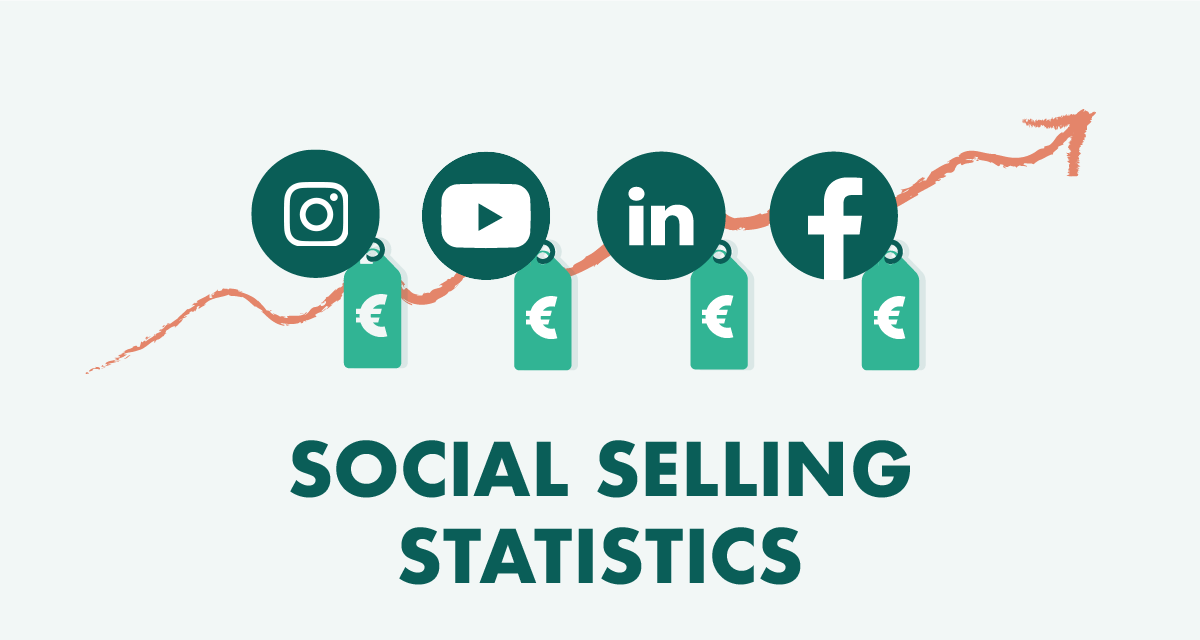A blog discussing why social selling is important, the different pieces of a strategy, and the tips you’ll need to build a great one.
Introduction
Social selling is a great way to improve sales performance. With the right strategy, you can use social media to grow your business and get more qualified leads. Here’s why:
What is social selling and why is it so important?
Social selling is a strategic approach to using social media to influence decision-makers in your target market. It’s critical because it helps you build relationships, trust, and rapport with prospects. It also helps you understand your target market better so that you can provide the right solution for their needs. As a result, social selling enables more sales conversations at a higher level – accelerating the sales cycle and increasing revenue for your organization!
This blog will discuss why social selling is important and how to build a great strategy for your business.
Social selling technology, data, and strategy
When it comes to social selling, there are three different parts of the strategy: technology, data and strategy. The first step is choosing a social selling tool that can help you achieve your goals. For example, if you want to focus on prospecting new leads and building relationships with them over time, then LinkedIn may be better suited for this task because it allows users to create more in-depth profiles than other platforms like Facebook or Twitter. Additionally, some tools will allow you to monitor conversations happening around topics related to your industry or business so that when someone mentions one of these keywords in a post on their timeline, for example, “I’m thinking about buying X product” then you can reach out and engage with them directly via DM (direct message).
The second step involves analyzing data related specifically to the performance metrics of each individual who has interacted with us via our platform(s). This could include things such as how many times per day certain types of content get viewed by people who have already interacted with us before within similar campaigns where we’re trying new tactics like posting images instead of text-only tweets etcetera! Using these insights then helps us make decisions regarding what type(s) advice best suits each target market segment based on demographics alone–which leads into our third point.”
Create a social selling onboarding process that works
Once you have identified the steps in your social selling onboarding process, it’s time to put it into action.
You might find that some of your team members are better equipped at creating content than others. Or perhaps some members have special skills that can be used for hiring prospects or closing business deals. Whatever the case may be, you’ll want to look at how each person can contribute and fill in any gaps with a clear plan of action.
This is where social selling strategies come in handy: they help facilitate communication between sales teams by defining roles and outlining responsibilities across various departments (marketing, sales). This means new hires will know what they should expect from their managers as well as how they’re supposed to work with other employees throughout the organization—and everyone will get on board faster!
Develop a social selling process and train your team to use it
Now that you’ve determined your goals and mapped out where you want to go, it’s time to develop a social selling process. This will walk your team through how they’ll engage with prospects and customers on social media.
To do this, start by identifying all the tools and activities that are included in your strategy. For example:
- Content planning and creation (blog posts, images)
- Social media scheduling (tweets, Instagram posts)
- Social listening/monitoring for mentions of the company or its competitors’ brands or products
- Campaign management software such as Sprinklr or Hootsuite (which are both free in most cases). These can be used to monitor keywords related to your brand so that when people talk about them online in public forums like Facebook groups or Twitter threads, they can respond accordingly with either more information about the product itself or live chat services available through these platforms.
With the right strategy, you can use social media to improve sales performance for your team.
With the right strategy, you can use social media to improve sales performance for your team. Social selling is an effective way to connect with potential customers, build trust and credibility, find new leads, convert leads into customers, and keep your existing customers engaged.
The key is to create a strategy that’s based on the needs of your company. What are its goals? How can you use social media to reach those goals? And how will it benefit the bottom line?
Conclusion
With the right strategy, you can use social media to improve sales performance for your team.
SocialEpoch
SocialEpoch is a highly acclaimed, technology-led Social Selling Solutions provider helping customers generate sales leads while engaging them more effectively. SocialEpoch provides complete end-to-end solutions for modern digital marketing platforms and channels, and SalesTech software so that businesses can stay ahead of the curve. Most businesses have yet to integrate social selling into their marketing strategies. Stay one step ahead of your competitors with automated and manual sales and marketing tools. We believe that innovation and technology should be harnessed to help businesses reach new heights and we make it possible for you to use, strategize, implement and track all your existing and potential customer data to drive greater returns.
















